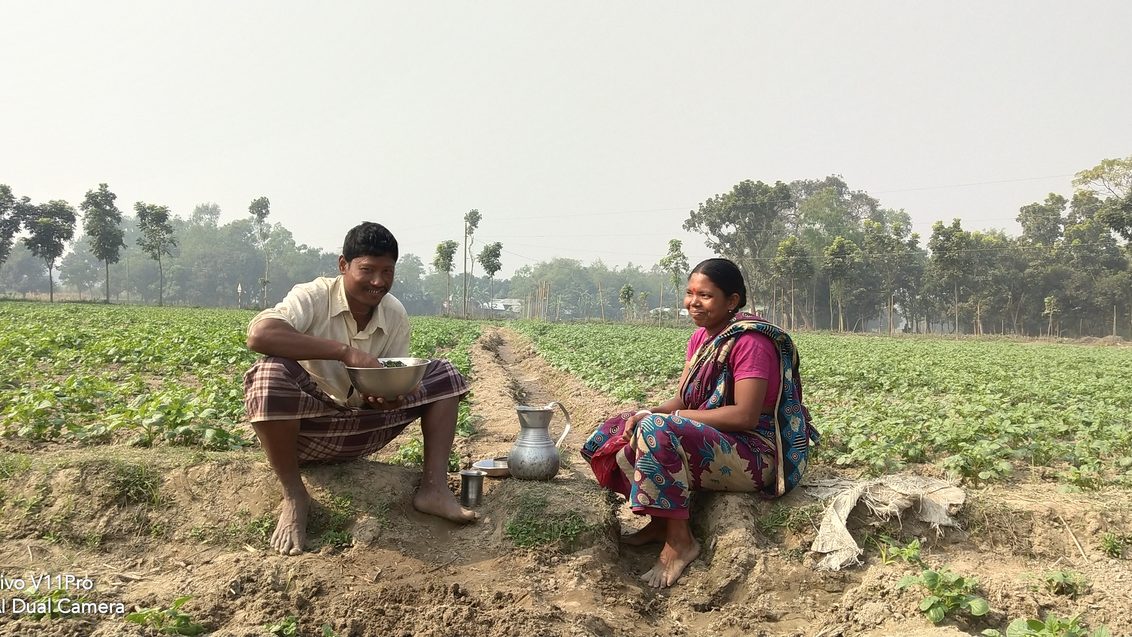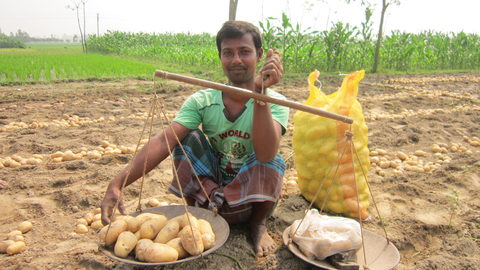Insurance makes sense – especially with extras

From 171 to 81,175 in two years: that’s the recent story of our Agricultural Insurance Solutions (AIS) in Bangladesh. The numbers refer to policies – insurance policies that meet smallholders’ needs. Education, trust-building, and added services contribute to success.
«To me, this story proves again that if one designs and administers weather index crop insurance correctly, smallholders will invest in this risk-management tool», says AIS Project Manager Aminul Moven. «Scale-up like that doesn’t just happen, however, and it’s certainly not only our work. It’s the result of combined efforts by a whole insurance partnership.»
Crop insurance can greatly strengthen smallholders’ resilience to climate change. Among the examples around the world is the Surokkha program established by the Swiss Agency for Development and Cooperation (SDC) and our Foundation.
«Since 2019, the Bangladesh AIS team has focused on developing farmer-centric insurance products, distribution channels, and farmer education», comments Moven. «Partnering with insurance companies, we’ve tailored drought, excess rainfall, and crop disease cover to match smallholders’ needs and pockets.»
Achieving success has not been easy. «In 2018, a study showed considerable farmer distrust of insurance», remarks our Bangladesh Country Director Farhad Zamil. «Smallholders didn’t like how agents collected premiums and settled claims for life insurance. That dissatisfaction affected how they viewed other types of insurance as well.»
As in other countries, local AIS employees knew that education was essential to help farmers understand and begin to trust crop insurance. Examples started with rice and potato, moving onto the cover for maize, vegetable, and flooding. «Over 350,000 farmers have already accessed crop insurance education», reports Moven. «I am very pleased to say that about 140,000 of them are women.»
Four routes to protection
AIS uses four education and insurance channels. Microfinance institutions combine the products with credit and other services. Selected retailers offer insurance together with farm inputs. Farmers’ Hubs, established by our Foundation, make cover one of their services. Agribusinesses include protection in contract farming agreements.
«One important thing we’ve learned is that in our country, crop insurance doesn’t appeal to farmers as a standalone», Moven comments. «One needs to add value through an extra service.» One popular example is Outbound Dialing (OBD). So far, more than 50,000 insured farmers have chosen to get weekly OBD voice calls. These provide weather forecasts and farming advice.
«Building trust also requires quick and reliable payouts on claims», adds Moven. «As so often in agriculture, ‘seeing is believing.» Between January 2019 and this March, almost 15,000 smallholders received a payout. «The peace of mind that such payouts provide has contributed to a rising number of repeat customers», says Moven. About 15% of smallholders who take out insurance now also do so in the following year. The AIS team wants to raise that figure to 25% by 2022.
Overall, Moven and his 18 colleagues aim for more than 230,000 farmers to have taken out insurance between 2019 and 2022. They plan further growth after that. Spread across ten districts of Bangladesh, the current figure is 81,175. Meet one of them here...
Third time lucky for an early adopter
Fuljan Begum grows crops and rears livestock in the Dinajpur district of western Bangladesh. Weather extremes are part of her life; they damage harvests almost every year. In 2019, Fuljan learned about crop insurance at a farmers’ meeting. She found the idea convincing and inspired her husband to purchase excess rain insurance for Boro season rice. They did not receive a payout, because the weather stayed fine and the rice harvest was good. Fuljan nonetheless bought Aman season rice insurance, this time against insufficient rainfall. During the coverage period, she received weather forecasts and farming advice as voice messages on her phone. Again, she didn’t receive a payout but was happy with the added service.
At the end of 2020, Fuljan purchased late blight insurance for her small potato plot. This time the weather turned against Dinajpur farmers. An outbreak of late blight damaged the potato harvest. Fuljan was content, however: her payout covered what she had spent on fungicide treatment. She also continues to receive forecast and advice services. «We’ve benefited from taking out crop insurance», says Fuljan. «I urge every farmer to do the same».

